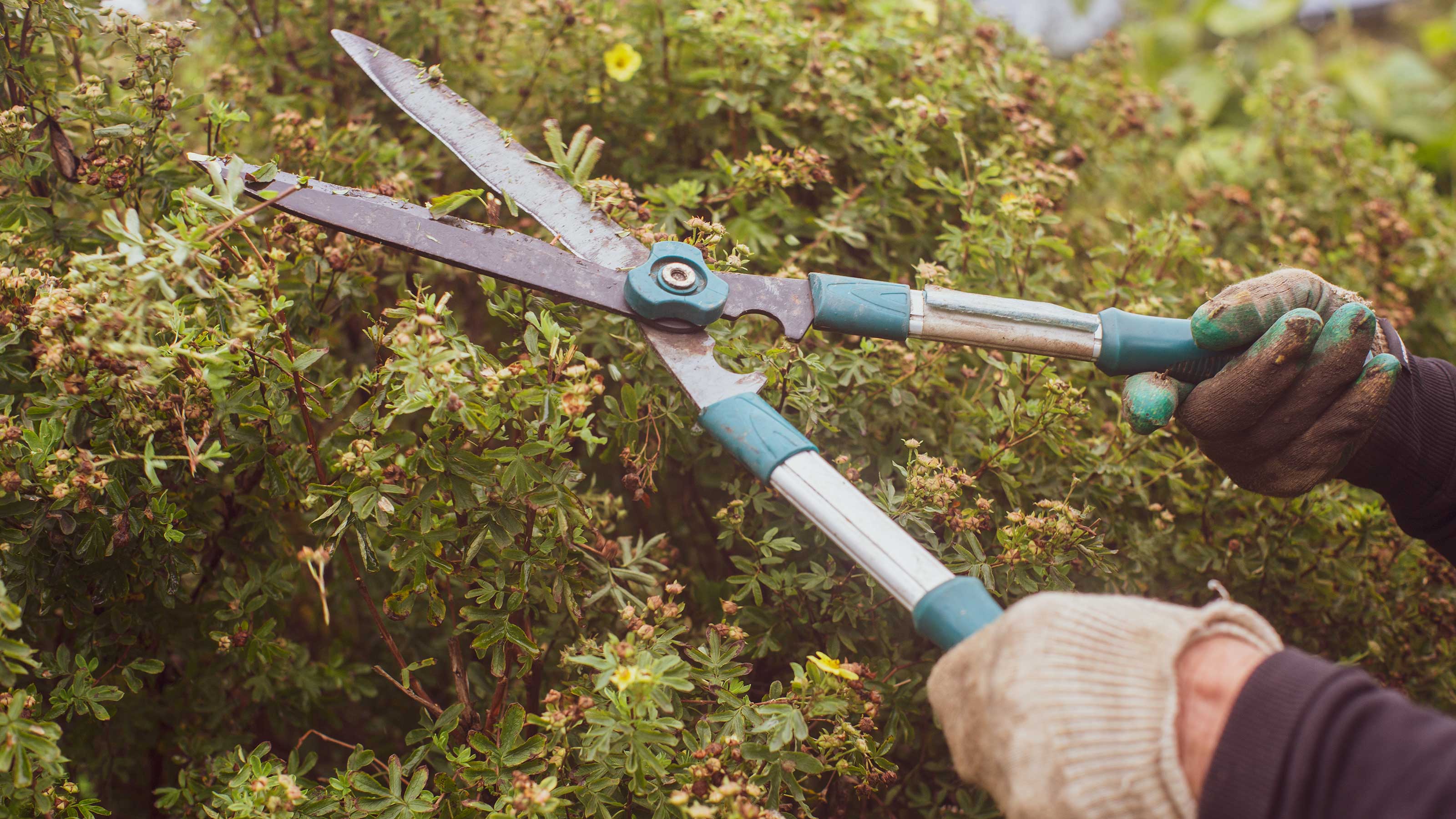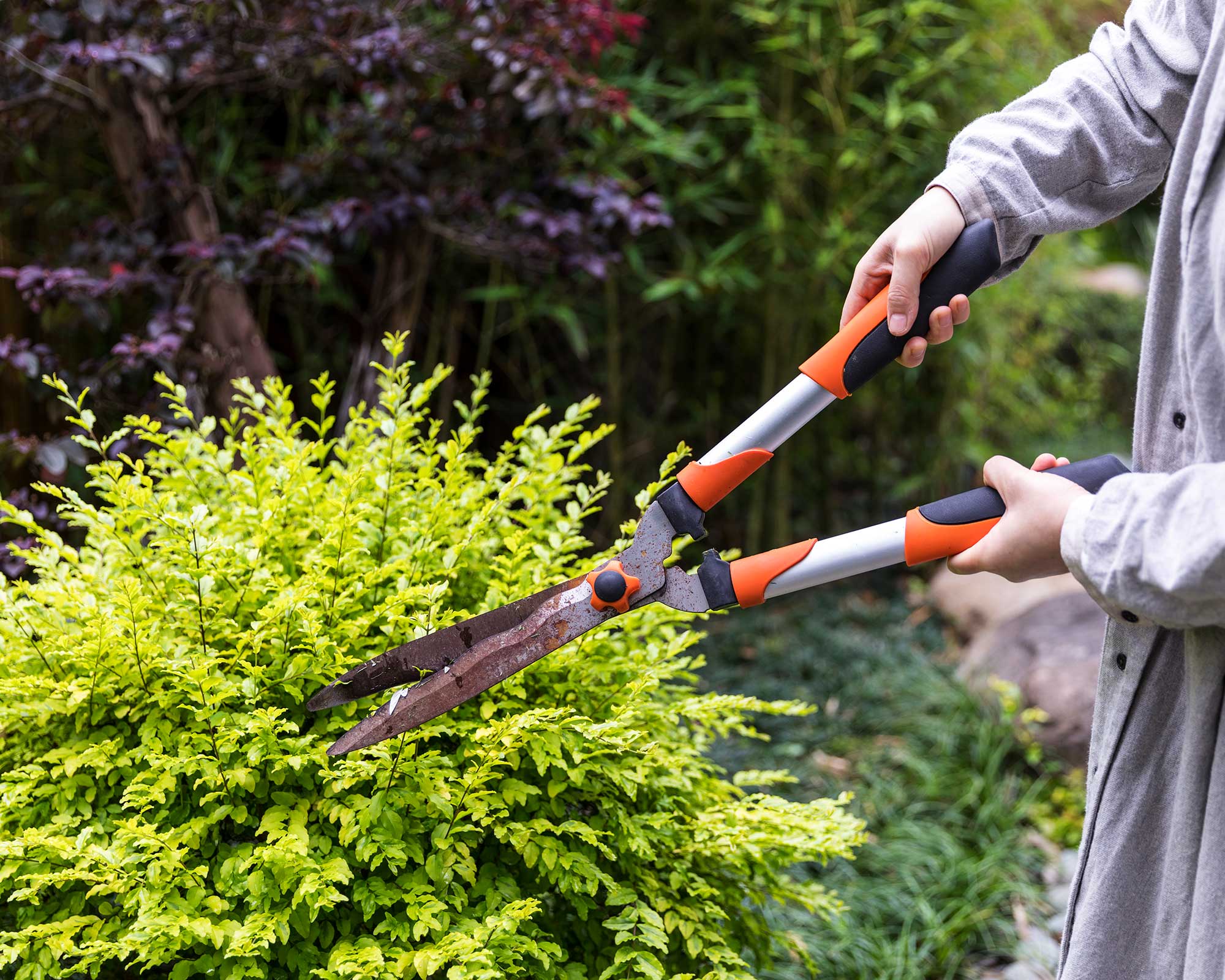How to sharpen garden shears: top tips for keeping your cuts sharp
Learn how to sharpen garden shears for a clean, close cut in all your gardening tasks


When you know how to sharpen garden shears, you'll be able to rest safe in the knowledge that these versatile tools will be usable for much longer. Whether you're chopping back branches and stems, or simply snipping at the borders of overgrown grass or problematic weeds, a good pair of garden shears are an essential part of your garden-maintenance arsenal.
Although they're sturdy pieces of equipment, over time even the best garden shears can get blunt and dirty with overuse. But it's important to keep them sharp: well-maintained tools last the longest, and in turn keep your plants healthier.
It might be a bit daunting to sharpen them yourself at first. What if you mess up your tools somehow – or even worse, sustain an injury? But thankfully there are lots of different (and safe!) options for sharpening your garden shears, including hand files, a sharpening stone, or even some sandpaper.

When your garden shears feel blunt, it's time to sharpen them
Follow these simple steps for how to sharpen garden shears
Before getting started with sharpening, your first step should always be cleaning your garden shears so they're free of dirt and rust. Leaving surface dirt on the blades can easily impede the effectiveness of the sharpening tools.
Paul Hicks, Product and Marketing Manager at STIHL, offers some expert advice: 'As with any garden tool, over time the once shiny blades of pruning shears can become dirty and stained, especially if they have been in regular contact with plant resin and sap.'
For that reason, it's a good idea to know how to clean pruning shears properly. 'In order to sharpen your pruners and shears, you should first give them a good clean with warm soapy water,' says Georgina Taylor from Fiskars. 'Use a sponge to wash the tool and then a clean rag to remove any moisture.'
If there's any rust or dirt that's trickier to get off and you're not quite sure how to clean rusty tools quickly and effectively, you can use a wire brush to gently scrape it off the blades, or alternatively use some plain steel wool or fine sandpaper.
Once your shears are clean, follow these simple steps:
- Wear safety gloves if you have a pair of them available. Thorn-proof gloves will do the trick, or your best gardening gloves. If you have a pair of safety goggles, we'd also advise you wear them too.
- Some gardeners like to hold their garden shears in a clamp to get the best and steadiest access, but you can also hold them in your hand.
- Take a hand-powered diamond file or sharpener of an appropriate size and medium coarseness, such as the Felco Sharpening Tool from Amazon, and match it to the angle of the blade. It's important to note that the cutting blade on garden shears is beveled, so it's usually only sharp on one side. As a result, you need to make sure you're sharpening the correct side only! Trying to sharpen the flatter edge will only serve to weaken the blade.
- Holding your file against the sharp side of the blade's edge, push your file forwards and away from your body with a firm motion. Never go 'back and forth' as this could result in injury.
- The blade should start shining really quickly - a sign that it's successfully sharpening. File until a sharp edge is visible, probably 8-10 strokes.
- Check the counter blade for any burrs (a curved lip of metal which might appear on the blade). Use a single light stroke that's totally flat to smooth out a burr.
- After you've sharpened your garden shears, it's always a good idea to lubricate them with cleaner or oil, such as the 3-in-1 multi-purpose oil from Amazon. This will help protect them from rust, and to avoid any build up of dirt or debris.

Sharpening your garden shears doesn't have to be difficult
Why is it important to keep garden shears sharp?
Keeping your garden shears sharpened is the best way to save time when pruning shrubs and other plants, as sharper blades will cut more easily through branches.
Sharp blades also make the cleanest cut, which in turn means the fastest healing of the plant. That way, you're reducing the risk of disease or infection affecting your plants too.
Georgina Taylor from Fiskars also highlights that 'you should always store your tools in a dry, cool environment to dry off after cleaning and sharpening, as this will help to further prevent rust.'
The same rules for good garden tool storage apply if you want to keep your best secateurs and best loppers in top condition too.

Sharpened garden shears will let you cut branches much more cleanly
Can I sharpen garden shears with sandpaper?
In a pinch, you can improve the sharpness of your garden shears with sandpaper, although it won't give you results as good as a hand file.
Take a piece of high-grit sandpaper, like 300-grit (available from Amazon), and secure it to your workbench. Keeping your wrists and hands as straight as possible, gently sand the blade while moving slowly upwards so the metal begins to shine.
Burrs are more likely with this sandpaper method, so make sure to remove them by lightly sanding the back of the blade in a circular motion until they're gone.
How often should you sharpen garden shears?
If your gardening exploits are few and far between, then sharpening your garden shears once a year will be sufficient.
If your regular pruning tasks range from pruning lilacs to pruning yews and everything in between, it's more likely that you'll need to sharpen your tools more regularly, which might be as often as every six weeks in the busy summer months.

Sharpen your shears more often in the summer

Freelance writer and author Flora Baker is a keen amateur gardener and houseplant enthusiast. Her small garden in South London is a constant work in progress as she gets to grips with snail prevention, DIY trellises and what to plant in shady spots overrun with ivy.
